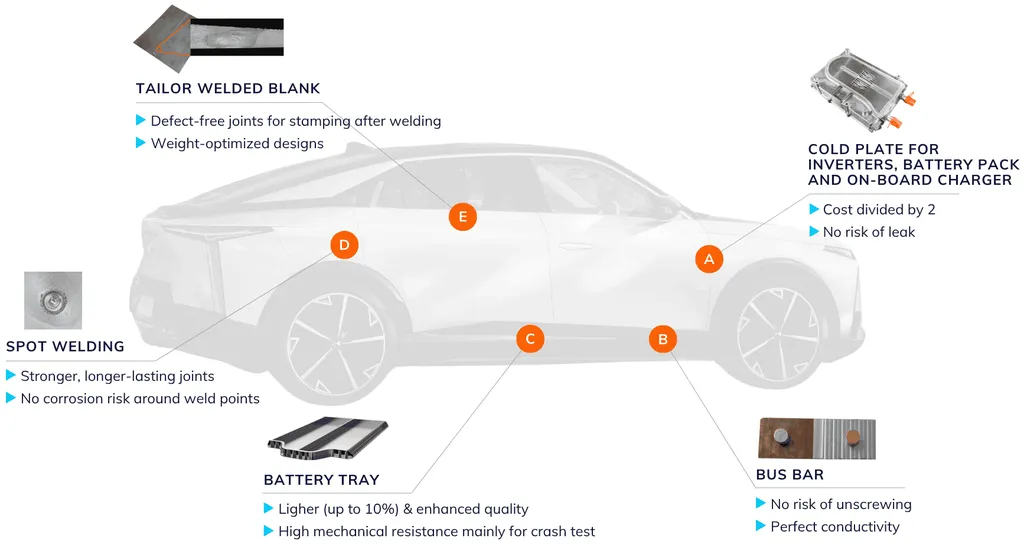In the ever-evolving world of automotive manufacturing, the quest for lighter, stronger, and more efficient materials has led to significant advancements in joining technologies. A recent study published in the *Journal of Advanced Joining Processes* (translated from German as *Journal of Advanced Joining Processes*) sheds light on the promising potential of friction stitch welding, a technique that could revolutionize car body construction, particularly in mixed-material structures.
The research, led by Dominik Walz from the Materials Testing Institute at the University of Stuttgart, investigates the weld characteristics of AA6016-T4 aluminum alloys in overlap configuration. This high-strength, age-hardenable aluminum alloy poses challenges to conventional joining methods due to issues like hot cracking and hydrogen porosity. Friction stir welding (FSW), a solid-state process, offers a solution by producing joints with higher strength, especially in high-strength aluminum alloys.
Walz and his team developed a friction stir welding gun capable of producing short stitch welds, aiming to bridge the gap between the strength of linear welds and the practicality of spot welds. The study found that short stitch welds achieved the highest lap-shear strength, reaching up to 83% joint efficiency, while longer welds ranged between 65% and 68%.
“The short stitch welds obtained the highest lap-shear strength, which is a significant finding for the automotive industry,” Walz explained. “This could lead to more efficient and stronger car bodies, reducing weight and improving fuel efficiency.”
Metallography revealed overlap-specific features such as cold-lap imperfections and showed that tool reentry can locally fragment the oxide line, diminishing cold-lap severity and improving static strength. However, the fatigue performance of the stitch welds was lower than that of the strongest static condition, with short stitches particularly susceptible to notch effects due to overlap-specific features and reentry-related porosity.
“While intersecting stitch welds can surpass continuous FSW in static strength, fatigue optimization will require mitigating the severity of the cold lap and reentry imperfections,” Walz noted. “This could be achieved through adapted tool and pin designs.”
The implications of this research are substantial for the automotive industry, particularly in the context of mixed-material body structures. By optimizing friction stitch welding, manufacturers could achieve stronger, lighter, and more efficient car bodies, contributing to improved fuel efficiency and reduced emissions.
As the industry continues to push the boundaries of material science and joining technologies, the findings from Walz’s study offer a glimpse into the future of automotive manufacturing. The research not only highlights the potential of friction stitch welding but also underscores the importance of ongoing innovation in the field.
For professionals in the energy sector, this research could pave the way for more efficient and sustainable transportation solutions, aligning with global efforts to reduce carbon footprints and enhance energy efficiency. The journey towards lighter, stronger, and more efficient materials is ongoing, and friction stitch welding is poised to play a pivotal role in this evolution.

